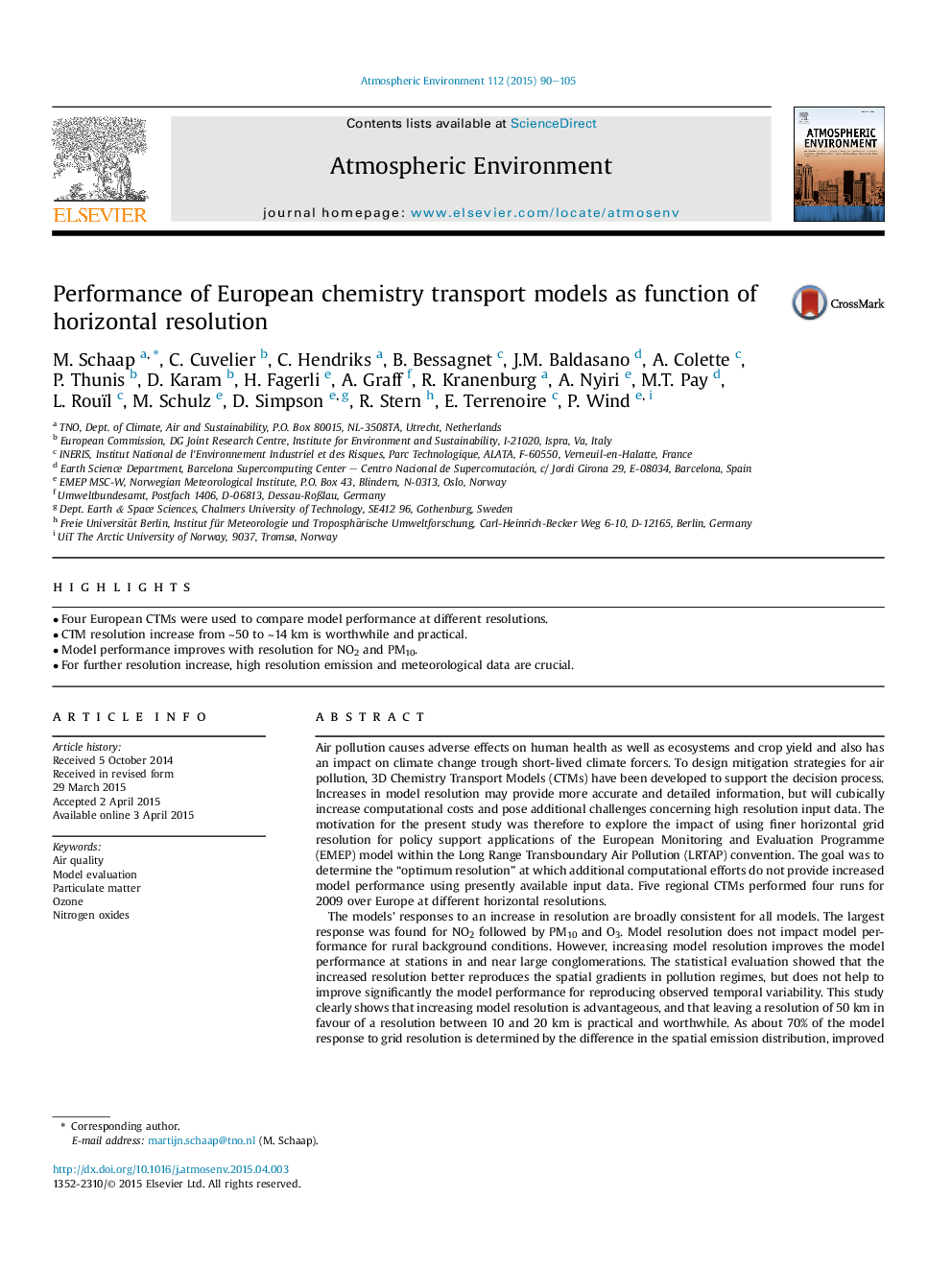| Article ID | Journal | Published Year | Pages | File Type |
|---|---|---|---|---|
| 6338046 | Atmospheric Environment | 2015 | 16 Pages |
Abstract
The models' responses to an increase in resolution are broadly consistent for all models. The largest response was found for NO2 followed by PM10 and O3. Model resolution does not impact model performance for rural background conditions. However, increasing model resolution improves the model performance at stations in and near large conglomerations. The statistical evaluation showed that the increased resolution better reproduces the spatial gradients in pollution regimes, but does not help to improve significantly the model performance for reproducing observed temporal variability. This study clearly shows that increasing model resolution is advantageous, and that leaving a resolution of 50Â km in favour of a resolution between 10 and 20Â km is practical and worthwhile. As about 70% of the model response to grid resolution is determined by the difference in the spatial emission distribution, improved emission allocation procedures at high spatial and temporal resolution are a crucial factor for further model resolution improvements.
Related Topics
Physical Sciences and Engineering
Earth and Planetary Sciences
Atmospheric Science
Authors
M. Schaap, C. Cuvelier, C. Hendriks, B. Bessagnet, J.M. Baldasano, A. Colette, P. Thunis, D. Karam, H. Fagerli, A. Graff, R. Kranenburg, A. Nyiri, M.T. Pay, L. Rouïl, M. Schulz, D. Simpson, R. Stern, E. Terrenoire, P. Wind,
